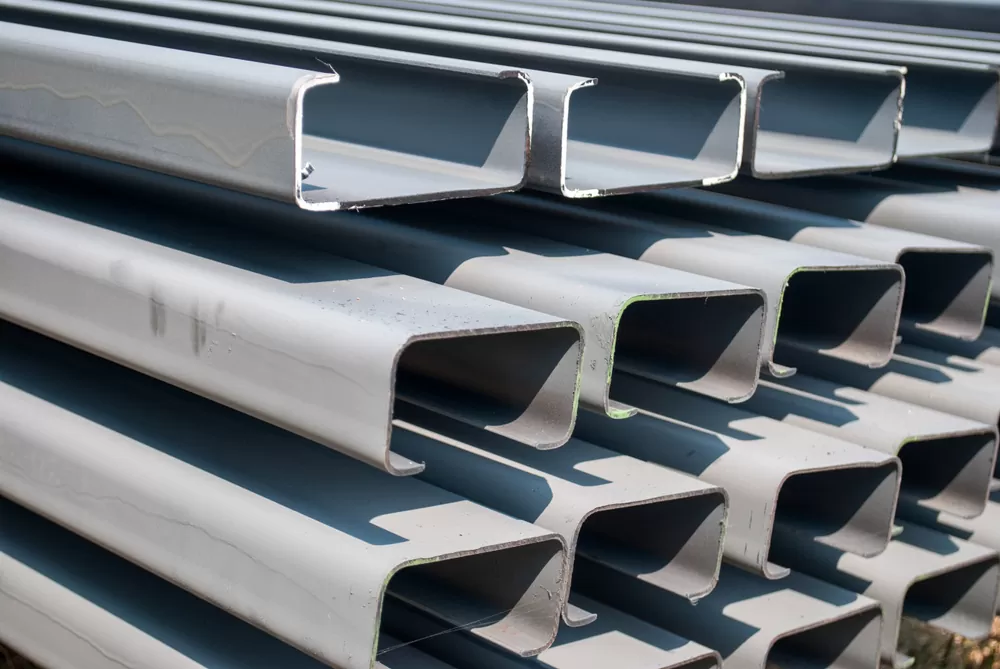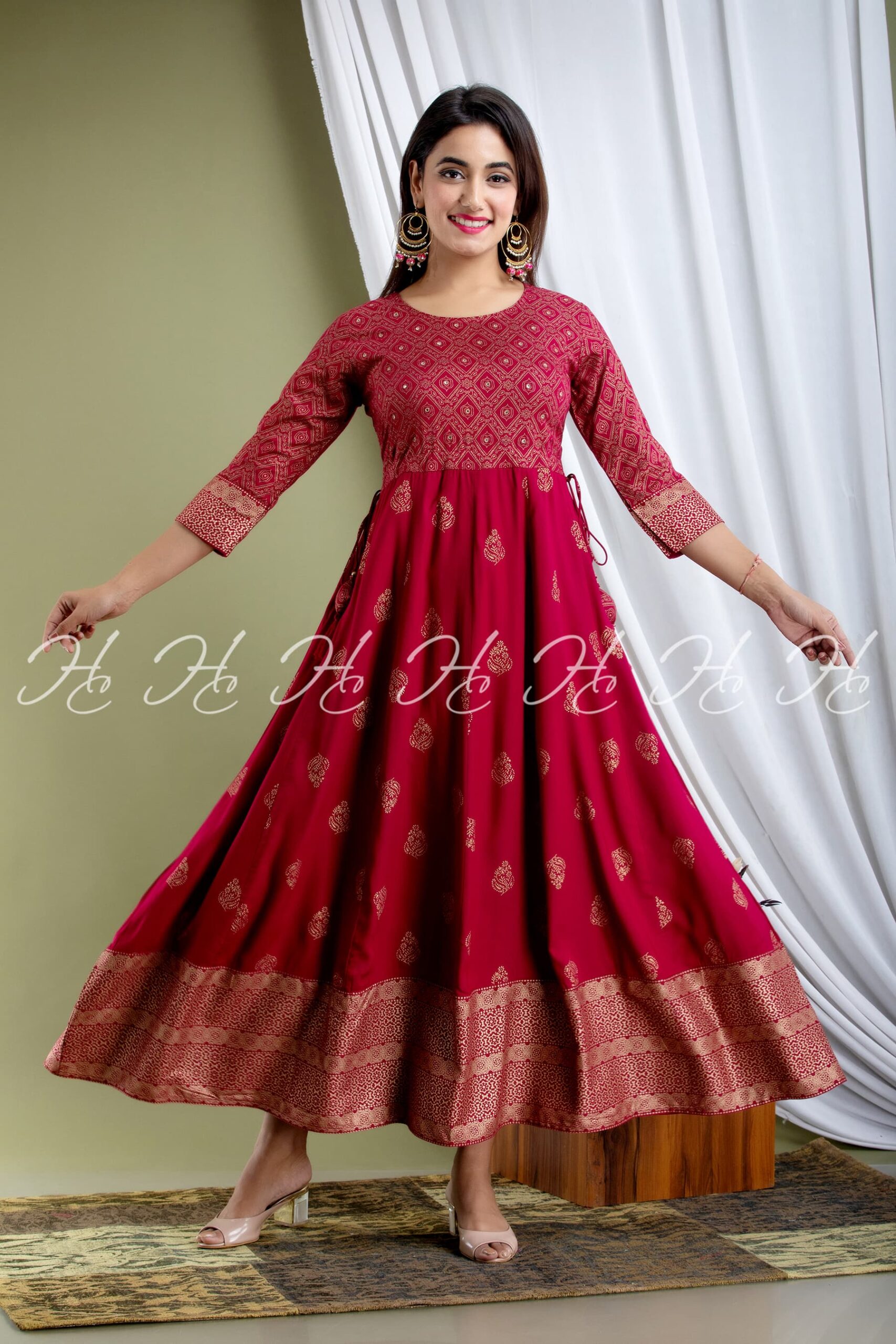What are the standard sizes and thicknesses of aluminium sheets?

Aluminium sheets are one of the most versatile and widely used materials across industries, ranging from construction and automotive to electronics and household applications. Their lightweight nature, corrosion resistance, and excellent strength-to-weight ratio make them ideal for numerous purposes. In places like Singapore, where manufacturing and infrastructure are key sectors, aluminium sheets play a crucial role. If you are looking for quality aluminium sheet Singapore suppliers, understanding their standard sizes and thicknesses is essential before making any purchase.
In this article, we will explore the standard dimensions, common thicknesses, and important aspects to consider when selecting aluminium sheets. We will also briefly compare aluminium with Stainless Steel Singapore to help you make a well-informed choice for your specific needs.
Understanding Aluminium Sheets
An aluminium sheet is a flat, thin piece of aluminium metal that is rolled from an ingot into different sizes and thicknesses. It is lighter than steel yet offers impressive durability and resistance to environmental elements. The flexibility of aluminium sheets makes them suitable for roofing, cladding, signage, packaging, and industrial fabrication.
Manufacturers typically classify aluminium sheets based on their thickness. They are often grouped into categories like foil, sheet, and plate:
- Aluminium Foil: Below 0.2 mm in thickness
- Aluminium Sheet: 0.2 mm to 6 mm in thickness
- Aluminium Plate: Above 6 mm in thickness
This classification helps users identify the most suitable type for their intended use.
Standard Sizes of Aluminium Sheets
When purchasing aluminium sheets, you’ll find that most manufacturers follow international standard dimensions. However, suppliers of aluminium sheet Singapore often offer both metric and imperial measurements to cater to different industry requirements.
The most common standard sheet sizes include:
- 1000 mm × 2000 mm
- 1220 mm × 2440 mm (equivalent to 4 ft × 8 ft)
- 1500 mm × 3000 mm
- 2000 mm × 4000 mm
- 2500 mm × 5000 mm
These standard sizes can be customized based on the project requirements. For instance, construction firms may request larger sheets to minimize joints, while smaller sheets are often used in fabrication workshops for easier handling and storage.
Many suppliers of aluminium sheet Singapore also offer cut-to-size services to meet specific architectural or industrial needs. This flexibility is beneficial for customers who require precision in their design and manufacturing processes.
Common Thicknesses of Aluminium Sheets
The thickness of an aluminium sheet is one of the most critical factors determining its strength, weight, and application. Below are the most widely available thickness ranges for aluminium sheet Singapore markets:
- 0.5 mm – 1 mm: Used for lightweight applications like interior cladding, nameplates, and decorative panels.
- 1 mm – 2 mm: Suitable for automotive parts, signage, and enclosures.
- 2 mm – 3 mm: Commonly used for roofing sheets, wall panels, and architectural facades.
- 3 mm – 6 mm: Ideal for heavy-duty structural and industrial applications, including transportation and machinery.
- Above 6 mm (Plates): Used in shipbuilding, aerospace, and large-scale engineering projects.
The chosen thickness often depends on the balance between durability and flexibility. For instance, thinner sheets are easier to bend and shape, while thicker sheets offer greater strength and impact resistance.
Aluminium Grades and Finishes
Besides sizes and thicknesses, aluminium sheets come in different grades and surface finishes. Each grade has unique mechanical properties and chemical compositions.
Common aluminium grades available in Singapore include:
- AA1100: Commercially pure aluminium, known for excellent corrosion resistance and formability.
- AA3003: Manganese-alloyed sheet with better strength than AA1100, used in roofing and utensils.
- AA5052: Known for its superior resistance to saltwater corrosion—ideal for marine environments.
- AA6061: A high-strength alloy suitable for structural and aerospace applications.
Surface finishes vary from mill finish (unpolished) to brushed, anodized, or powder-coated, depending on the appearance and protection required. Many aluminium sheet Singapore suppliers provide customized finishes for architectural and design projects.
Comparison Between Aluminium and Stainless Steel
When comparing aluminium sheet Singapore with Stainless Steel Singapore, both materials have distinct advantages depending on the application.
| Property | Aluminium Sheet | Stainless Steel |
| Weight | Lightweight, about one-third the weight of steel | Heavier and denser |
| Corrosion Resistance | Excellent, especially when anodized | Exceptional, especially grades 304 and 316 |
| Strength | Moderate but sufficient for most uses | Very high tensile strength |
| Conductivity | Excellent thermal and electrical conductivity | Lower electrical conductivity |
| Cost | Generally more affordable | Slightly more expensive |
| Applications | Roofing, signage, transportation, packaging | Kitchenware, construction, medical, and industrial use |
If weight reduction and corrosion resistance are priorities, aluminium sheets are the better option. However, when superior strength and durability are essential, stainless steel becomes the material of choice. Both materials are widely available in Singapore, with suppliers offering different grades, finishes, and thicknesses to suit project requirements.
Choosing the Right Aluminium Sheet for Your Project
When selecting an aluminium sheet Singapore product, consider these key factors:
- Application Requirements: Determine if the sheet will be used indoors or outdoors, and what type of load or stress it will face.
- Thickness and Grade: Choose a thickness and alloy grade that matches the project’s strength and flexibility needs.
- Finish and Appearance: Select finishes such as anodized or powder-coated surfaces for aesthetic appeal and corrosion resistance.
- Supplier Reliability: Always buy from trusted Stainless Steel Singapore and aluminium sheet distributors to ensure consistent quality and proper certifications.
Conclusion
Understanding the standard sizes and thicknesses of aluminium sheets helps you make informed decisions when sourcing materials for your projects. In the dynamic industrial market of Singapore, aluminium sheet Singapore suppliers provide a variety of sizes, grades, and finishes to meet diverse requirements. Whether you’re in construction, transportation, or design, aluminium remains one of the most adaptable materials available.
FURTHER READING...
How does a general contractor manage timelines and budgets?
November 1, 2025
What types of Kurtis are commonly produced by leading manufacturers?
October 31, 2025
How can the Autoimmune Paleo Diet help manage autoimmune conditions?
October 24, 2025
How Does Professional Ceiling Drying Prevent Mold Growth?
October 24, 2025
How Do You Choose the Right Braided Wig for Your Look?
October 18, 2025
Latest - post
Category
- ! Без рубрики (8)
- 1k (8)
- 1win-oyna (1)
- 1win-uz-kirish.org (1)
- 1x (1)
- 1xbet (1)
- 1xbet Casino AZ (8)
- 1xbet Korea (1)
- 1xbet russian (9)
- 1xbet russian1 (2)
- 1xbet-india-online.in3 (1)
- 1xbet-kirish.com (1)
- 1xbetsenegal.win (1)
- 2 (1)
- 22bet Österreich (1)
- a16z generative ai (4)
- abukingcasinoportugal.com (1)
- acrataofficial.com (1)
- adonnasbakery.net (1)
- ageofthegods.win (1)
- Ai News 2025 (2)
- akss.uz (1)
- americanfoodshop.it (1)
- amonbet.us (1)
- amonbetuk.uk (1)
- answer (1)
- answers (2)
- appleoffortune.net (1)
- ateliermasomi.com (1)
- aviamasters-games.net (1)
- aviatorbet.co.uk (1)
- ballonixgame.win (1)
- basswin.us (1)
- bcgamedownloadandroid.com (1)
- bchsfoundation.org (1)
- bdmbetitalia.com (1)
- bdmbetportugal.com (1)
- betbeastaustralia.com (1)
- betonred-australia.net (1)
- betonred-cz.org (1)
- betonreddeutschland.com (1)
- betonredespana.net (1)
- betonredfrance.com (1)
- betonredhungary.com (1)
- betonreditaly.net (1)
- betonredpl.win (1)
- betonredportugal.net (1)
- betsafecasino.uk (1)
- betsafeperu.org (1)
- betting (1)
- bigbassbonanza.cc (1)
- bigbasssplash.cc (1)
- bigbasssplash.com.es (1)
- bigbeverage.net (1)
- billionairespincz.com (1)
- billionairespinespana.com (1)
- bizzo.at (1)
- bizzocasinoespana.net (1)
- blog (165)
- bookhippo.uk (1)
- Bookkeeping (10)
- bragdonhousebb.com (1)
- buffaloblitzslot.org (1)
- Business (24)
- Buy Semaglutide (1)
- candy-spinz-casino.com.de (1)
- candyspinz.us (1)
- candyspinzespana.com (1)
- cascbar.co.uk (1)
- cashorcrash.org.uk (1)
- cashwinosterreich.com (1)
- casino (42)
- casino en ligne argent reel (1)
- casino en ligne fr (10)
- casino utan svensk licens (1)
- casino zonder crucks netherlands (11)
- casino-days.us (1)
- casinoinfinityespana.com (1)
- casinomate.us (1)
- casinonicaustralia.net (1)
- casinowazamba (2)
- cazeuscasinoitalia.com (1)
- CH (2)
- chicken-road-game.org.uk (1)
- chicken-road-it.org (1)
- chicken-road-online.net (1)
- chicken-road2.co.uk (1)
- chicken-road2.in (1)
- chicken-road2.us (1)
- chickencross-es.com (1)
- chickencrossavis.com (1)
- chickencrossgame.co.uk (1)
- chickengamegambling.us (1)
- chickenroadavis.net (1)
- chickenroadcasinofrance.com (1)
- chickenroadespana.com (1)
- chickenroadgame.cc (1)
- CIB (2)
- ciispecialabilityjobs.in (1)
- clovermagic.us (1)
- clovermagiccasino.us (1)
- cresus-casino.us (1)
- crownplaygreece.com (1)
- czdrops25monobrands (1)
- debradeleiwharf.co.uk (1)
- destination-fremtiden.dk (1)
- drivein.hr (1)
- dropthebossgame.org.uk (1)
- EC (2)
- emmeessentials.co (1)
- Environment (10)
- eyeofhorus.cc (1)
- fatpiratecasinoitalia.com (1)
- fatpiratefrance.com (1)
- fatpiratenederland.com (1)
- Forex Trading (5)
- fortuneoxplataforma.com (1)
- frumzicasino-hu.net (1)
- frumzicasinoespana.com (1)
- frumzicasinogreece.com (1)
- funbetbrasil.com (1)
- funbetcasinodeutschland.com (1)
- funkyaardvark.co.uk (1)
- garden2table (1)
- gates-of-valhalla.com (1)
- gatesofolympusslot.cc (1)
- gatesuperscatter.org (1)
- godsgypsy.com (1)
- gopbeavercounty.org (1)
- grandearmadio.com (1)
- gransinocasinoespana.com (1)
- gransinouk.uk (1)
- heyspincasino.uk (1)
- hollywoodbetsmz.com (1)
- Home (1,183)
- hotslotspl.net (1)
- hrcarers.org.uk (1)
- hudsunmedia.com (1)
- huffnmorepuff.us (1)
- imvest.it (2)
- irwincasino-pl.com (1)
- itreadynetwork.org (1)
- ivibetcasino.us (1)
- ivibetkasyno.net (1)
- jamesbrausch.com (1)
- jonbet.br.com (1)
- just-casino-australia.org (1)
- justcasinonz.net (1)
- justpokiescasino.com (1)
- kaeserei-fuegen.at (1)
- kampo-view.com (1)
- kingbillywinaustralia.com (1)
- kycoroners.com (1)
- lalabetnederland.net (1)
- legacyofdeaddemo.com.de (1)
- leoncasino.org.uk (1)
- leoncasinoportugal.com (1)
- lepharaohslot.us (2)
- locandadelcolonnello.it (1)
- lucky-mister.net (1)
- lucky7-casino.us (1)
- luckydayscasinonz.com (1)
- luckydaysireland.com (1)
- luckygreencasino.us (1)
- luckyonescasinoaustralia.com (1)
- Marketing (11)
- marniegrundman.com (1)
- Medical (11)
- megajokernetent.com (1)
- megajokerslot.net (1)
- Mono-brand (7)
- Monobrand (17)
- monsterslots.uk (1)
- mostbet (1)
- mostbet ozbekistonda (1)
- mostbet-azerbaycan-giris (1)
- mostbet-oyna (1)
- mrvegasuk.uk (1)
- nationalcasinohungary.net (1)
- nationalcasinopl.org (1)
- NEW (2)
- News (28)
- nextstageco.com (1)
- NV Casino Schweiz Bewertungen auf TrustPilot (1)
- nystagmus.me (1)
- ocbombers.com (1)
- oct_bh_fitclubreformer.com (1)
- oddboy.nz (1)
- olympecasino.us (1)
- olympecasinofrance.net (1)
- Omegle (12)
- Omegle cc (12)
- Online Casino (3)
- oscarspin.us (1)
- oscarspinespana.com (1)
- oscarspinportugal.com (1)
- oshicasino.us (1)
- ozwincasino.uk (1)
- ozwincasinoespana.com (1)
- PariMatch India (1)
- pdrc (1)
- penaltyshootout.us (1)
- pikarimai.co.nz (1)
- pinupazerbaycan.win (1)
- Pirots SE (1)
- play-ojo-canada.com (1)
- playojo.games (1)
- playojonz.com (1)
- playojouk.co.uk (1)
- playregalfrance.net (1)
- playuzu.games (1)
- plinko (12)
- plinko-official.com (2)
- plinkogamecasino.net (1)
- plinkogamedownload.in (1)
- plinkorecensioni.org (1)
- Post (20)
- prava-osi.hr (1)
- pt (1)
- ragingrhino.org (1)
- ready_text (14)
- Relationship (10)
- Review (14)
- reviewer (55)
- ricordiamocidellinfanzia.it (1)
- ripper-casino.us (1)
- rippercasinoespana.com (1)
- rjlprecisioneng.co.uk (1)
- rocketplaycanada.net (1)
- roll-x-game.net (1)
- rollx-game.org (1)
- Roobet Official Website in India (1)
- roobetnz.com (1)
- rubyfortune.world (1)
- Semaglutide Online (1)
- slots-magic.com.de (1)
- Sober living (7)
- space-interiors.it (1)
- spacexy.co.uk (1)
- spain (2)
- spin-casino-chile.net (1)
- spinangacasinogreece.net (1)
- spincasino-es.com (1)
- spincasinoromania.com (1)
- spingranny.us (1)
- spingrannyportugal.com (1)
- spinmama-de.com.de (1)
- spinmama-pt.com (1)
- spinmamaespana.com (1)
- spinmamafrance.net (1)
- spinmamaitaly.net (1)
- spiritcasinoaustralia.org (1)
- stellarspinscasinoaustralia.com (1)
- stockx.co.nz (1)
- sunofegypt3.us (1)
- superacedemo.net (1)
- sweet-bonanza-germany.com (1)
- sweetbonanzaslot.us (1)
- tedxmarseille.com (1)
- test (1)
- tfsvl.co.uk (1)
- timclarkband.com (1)
- tsarscasinoaustralia.net (1)
- tuopreventivatore.it (2)
- twiceastranger.net (1)
- twincasino-sv.com (1)
- twincasino.us (1)
- twocooks.ie (1)
- uk (1)
- uncategorized (46)
- uniquecasinoespana.net (1)
- Up X (3)
- UP X Casino (1)
- vegasino-ie.com (1)
- Vegastars Casino Australia (1)
- very-well-casino.org.uk (1)
- wazambacasinoespana.com (1)
- wazambacasinohungary.com (1)
- wbcommunitytrust.co.uk (1)
- wbcommunitytrust.co.uk2 (1)
- Wettigo Suisse – agenceapocope.com (1)
- wildrobincasino-de.com (1)
- wildrobinfrance.com (1)
- win-spirit-canada.com (1)
- win-unique-casino.org (1)
- winspirit.us (1)
- winspiritcanada.net (1)
- winvegasplus.org (1)
- woocasinoaustralia.net (1)
- yayas.uk (1)
- zoomecasino.us (1)
- Новости Форекс (9)
- сателлиты (2)
- сеточный домен (6)
- сеточный домены (1)
- 카지노사이트 – onlifezone.com (1)
- 카지노사이트추천 (1)











